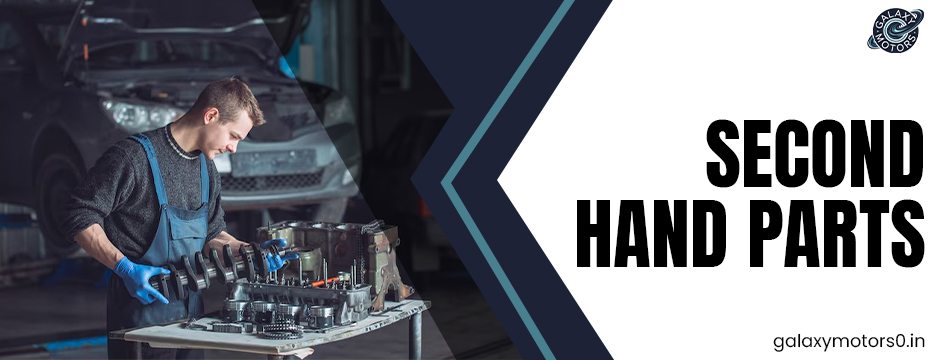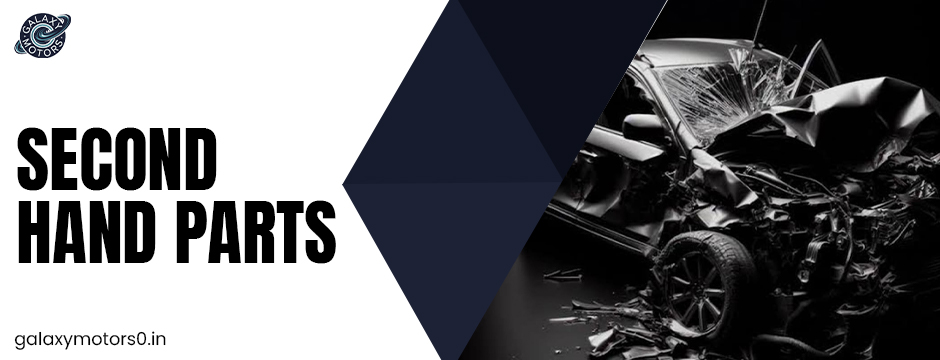When it comes to maintaining or upgrading a vehicle, brand-new parts can take a toll on your wallet. Whether you’re a car enthusiast, a DIY mechanic, or someone just trying to save money on repairs, second-hand auto parts offer a smart and sustainable solution. Buying used parts can reduce costs significantly—sometimes by more than half—while also contributing to the growing movement of recycling and reducing waste. But here’s the catch: not all used parts are worth the investment.
Without a keen eye and some insider knowledge, you could end up with a faulty part that fails you at the worst time. That’s why knowing how to inspect and purchase quality second-hand car parts is crucial. You don’t have to be an auto expert to make smart decisions—you just need to know what to look for, what to avoid, and where to shop. In this guide, we’ll break down the essential steps to inspect and buy Second Hand Parts like a pro.
Know What You Need Before You Shop
Before you begin your search, make sure you know exactly which part you’re looking for. That means having:
- The correct part name
- OEM (Original Equipment Manufacturer) number, if possible
- The year, make, and model of your vehicle
- Any version or variation specific to your car (engine size, trim level, etc.)
These details help you avoid buying incompatible or incorrect parts. Cross-check part numbers or consult your vehicle’s manual if you’re unsure.
Buy from Trusted Sources Only
Not all sellers are equal. Avoid random marketplaces or unreliable listings unless you’re prepared to take a risk. Instead, consider:
- Reputable second-hand dealers such as Galaxy Motors Ahmedabad, with reviews
- Certified dismantlers or recyclers
- Authorised salvage yards
- Online platforms with verified sellers
Professional sellers will often provide guarantees, receipts, and better quality control than casual sellers. You may also get warranties on specific components like engines or transmissions.

Always Inspect the Part Physically (If Possible)
Whenever possible, inspect the part in person. Here’s what to look for:
- Rust or Corrosion: Avoid heavily rusted components. Minor surface rust is okay for some parts, but should not compromise the structure.
- Cracks and Breaks: Look closely for fractures, especially in plastic or aluminium parts.
- Leaks: On items like water pumps, radiators, and oil pans, leaks are a red flag.
- Wear and Tear: For mechanical parts like brake rotors, clutches, or alternators, signs of heavy wear can indicate a short remaining life.
- Fitment: Ensure the part has the correct mounts and connections.
If buying online, request detailed photos and videos from various angles, and ask about the item’s history.
Verify Compatibility with OEM Numbers
Matching part numbers is crucial for performance and fitment. You can find the OEM number on the part itself or in your vehicle’s service manual. Use this number to:
- Cross-reference with online listings
- Ask the seller for confirmation of the Second Hand Parts
- Check compatibility using vehicle lookup tools on auto part websites
OEM numbers remove the guesswork from the buying process and ensure you get the correct match.
Ask About the Part’s History
Don’t be afraid to ask questions. A credible seller should be able to tell you:
- Where the part came from (salvaged car, returned item, etc.)
- How many kilometres the vehicle had before dismantling
- Whether the part has been tested
- If any repairs or refurbishments have been made
Knowing the history helps assess whether the galaxy car parts still have good life left in them.
Be Cautious with Certain Parts
Some components are safer to buy used than others. Here’s a quick breakdown:
Good to Buy Used:
- Body panels (doors, bumpers, fenders) from Galaxy Automobiles Private Limited
- Mirrors and lights
- Rims and wheels
- Interior components (seats, dashboards, radios)
Caution Required:
- Alternators and starters (ensure they’ve been tested)
- Transmissions (ask for warranty and mileage)
- Engines (should include compression test reports and warranty)
Avoid Buying Used:
- Timing belts and rubber hoses (these wear out over time)
Don’t Skip the Warranty or Return Policy
A return policy or short-term warranty is a strong indicator of a trustworthy seller for automobile suspension parts. Look for:
- A clear return window (usually 7–30 days)
- Warranty for mechanical items (at least 30–90 days preferred)
- Return shipping terms and restocking fees
Even used parts should come with some peace of mind.
Check for Counterfeits
Yes, counterfeit parts exist in the second-hand market too. Spot fakes by:
- Comparing branding and markings with genuine parts
- Inspecting spelling or printing errors
- Noticing suspiciously low prices
Stick to well-known suppliers and always double-check part numbers and logos.

Keep Records of Every Purchase
Maintain documentation of every part you buy from Galaxy Motors. This should include:
- Purchase invoice or receipt
- Seller contact information
- Photos before and after installation
- Warranty details (if any)
Good records help with returns, future diagnostics, and vehicle resale value.
Install With Care or Use a Professional
Even a perfect part can cause issues if installed incorrectly. If you’re not confident, have a professional mechanic install the component. This ensures:
- Proper fit and alignment
- Safe operation
- No damage to surrounding systems
Some garages even offer installation services for customer-supplied parts—just ask in advance.
Wrapping Up
Buying Second Hand Parts doesn’t have to be a gamble. With a little research, careful inspection, and sourcing from trusted vendors, you can score excellent deals without compromising safety or quality. Whether you’re replacing a damaged component or customising your ride on a budget, the key lies in doing your homework and knowing what red flags to watch out for.
For a hassle-free experience with guaranteed quality, check out Galaxy Motors—your one-stop destination for reliable second-hand car parts in India. With a reputation for authenticity, customer satisfaction, and expert support, we ensure your vehicle gets the part it needs, minus the stress.

